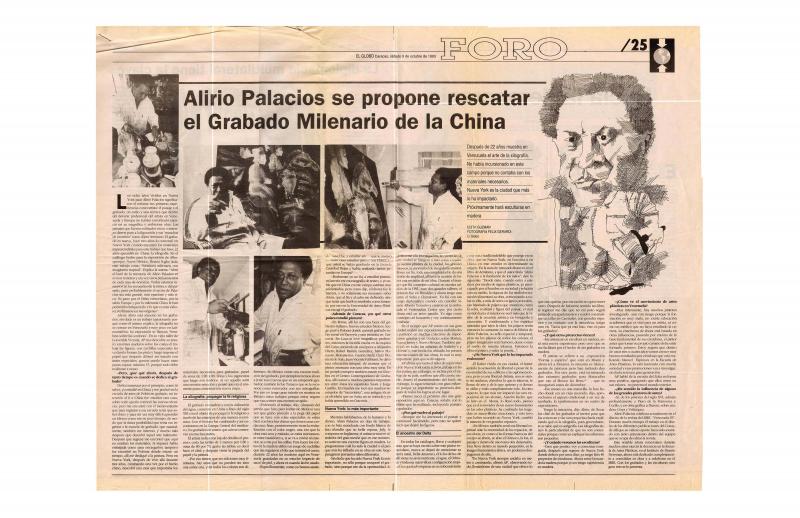This text is an interview with Alirio Palacios (b. 1944) conducted by the United States journalist Julie Kruger. The interview provides relevant, richly detailed information about the Venezuelan artist’s experience during his four years of study in China. As stated in the article’s headline, Palacios describes a China barely known in the West. Other articles, such as that written by M. A. (“Los grabados chinos de Alirio Palacios,” in El Nacional, Caracas, July 21, 1967), sketch a general overview of this ancient country and its graphic tradition. But here, Kruger gives abundant details that help us to imagine Palacios (born in the Orinoco River delta) faced with a foreign yet profoundly rich culture. Given the laborious nature of the traditional process that demanded the preparation of a detailed preparatory drawing—then slowly transferred to the woodcut—the artist sketched directly on the wood: “I drew with my knife,” he confesses to Kruger. The text allows us to focus the contrasts between the Eastern and Western views of the woodcut as a medium for achieving a graphic purpose.
[As supplementary reading, see the essay by Igor Molina, “Alirio Palacios: El arte de la violencia,” which highlights the artist’s training in printmaking both in Poland and China, ICAA digital archive doc. no. 1155701; Lenelina Delgado’s article, “Alirio Palacios: El estado tiene la responsabilidad del futuro del Centro de Diseño” (doc. no. 1155596); two texts by Olga González, “Mezzotintas de Alirio Palacios: El final del aprendizaje gráfico” (doc. no. 1156997) and “Regresa a su país uno de los grabadores más importantes de América Latina” (doc. no. 1155203); Yasmín Monsalve’s review, “Soy un gran aliado de mi país: Alirio Palacios expone xilografías en la Freites” (doc. no. 1155733); in addition to Edith Guzmán’s interview, “Alirio Palacios se propone rescatar el grabado milenario de China” (doc. no. 1155809)].






